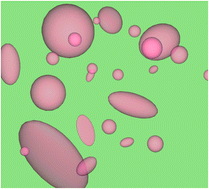Experimental tests of a new correlated chromophore domain model of self-healing in a dye-doped polymer
Abstract
Temperature-dependent

- This article is part of the themed collection: Self-healing polymers
* Corresponding authors
a
Department of Physics and Astronomy, Washington State University, Pullman, Washington 99164-2814, USA
E-mail:
kuz@wsu.edu
b Department of Chemistry, Katholieke Universiteit Leuven, Celestijnenlaan 200D, B-3001 Leuven, Belgium
Temperature-dependent

 Please wait while we load your content...
Something went wrong. Try again?
Please wait while we load your content...
Something went wrong. Try again?
S. K. Ramini, B. Anderson, S. Hung and M. G. Kuzyk, Polym. Chem., 2013, 4, 4948 DOI: 10.1039/C3PY00263B
To request permission to reproduce material from this article, please go to the Copyright Clearance Center request page.
If you are an author contributing to an RSC publication, you do not need to request permission provided correct acknowledgement is given.
If you are the author of this article, you do not need to request permission to reproduce figures and diagrams provided correct acknowledgement is given. If you want to reproduce the whole article in a third-party publication (excluding your thesis/dissertation for which permission is not required) please go to the Copyright Clearance Center request page.
Read more about how to correctly acknowledge RSC content.
 Fetching data from CrossRef.
Fetching data from CrossRef.
This may take some time to load.
Loading related content
